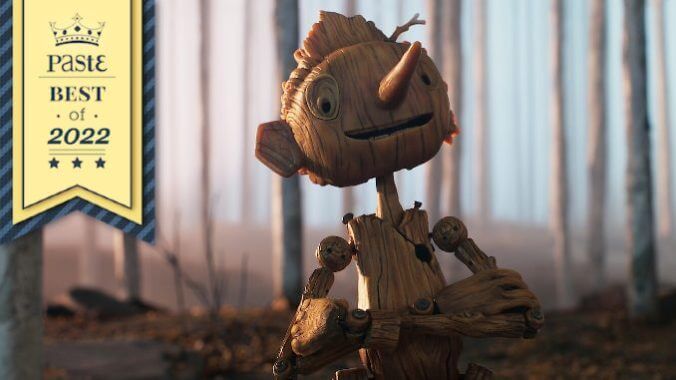The Best Movies of the Year: Guillermo Del Toro’s Pinocchio Is the Pinnacle of 2022’s Stop-Motion Celebration

There’s a lot to appreciate about shortcuts and expedited paths. But with the wisdom of age and experience, there’s a reckoning. One that comes along with cherishing the value of the extended process of a craft, and then the rewards that come with investing in the minutiae that builds towards a whole. In the world of film, there’s no better example than the art of stop-motion animation.
A pursuit for the patient and ambitious, the medium is all about making meticulous progressions of movement, captured at 24 individual frames per second, to replicate what happens in the blink of our everyday eyes. Always a niche pursuit in the animation milieu, those who have embraced and revered it have kept it going, handing the proverbial baton to the next generation willing to subsume their creative selves into the technique. Today, studios like Aardman Animation and Laika are the predominant keepers of the flame, with directors like Nick Park, Henry Selick and Phil Tippett synonymous with continuing to produce theatrical works in the medium that push the form into new directions.
And then there are the admirers who have thrown themselves into the pool to keep the niche art alive, like director Dean Fleischer-Camp, adapting his and Jenny Slate’s live-action/stop-motion shorts to the big screen with Marcel the Shell with Shoes On. Or those whose Hollywood clout has been used to ensure financing is found for these projects, like Jordan Peele co-writing Wendell & Wild with Selick for Netflix, and Guillermo del Toro joining veteran Mark Gustafson to co-direct their vision of Pinocchio. Each is a testament to the enduring, active admiration it requires to keep this medium alive, just in 2022 alone, while also being love letters to the art and practice of intricate precision and boundless cinematic vision.
In particular, Guillermo del Toro’s Pinocchio is a stunning collision of reverential cinematic tribute, the pure distillation of del Toro’s visual aesthetics, and an opportunity for this medium to reinvigorate Carlo Collodi’s classic story in a way that only it can truly honor the magic of a wooden puppet who comes to life.
-

-

-

-

-

-

-

-

-

-

-

-

-

-

-

-

-

-

-

-

-

-

-

-

-

-

-

-

-

-

-

-

-

-

-

-

-

-

-

-








































